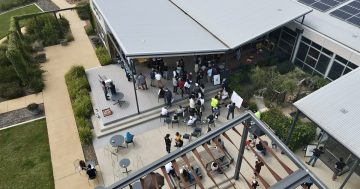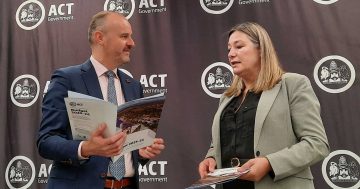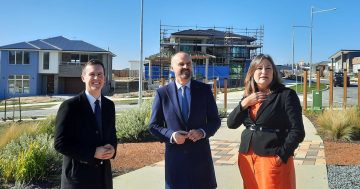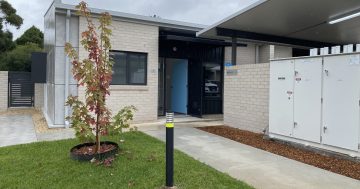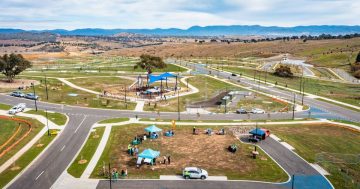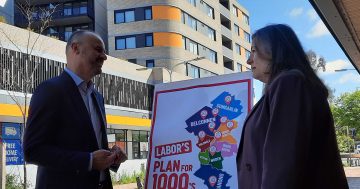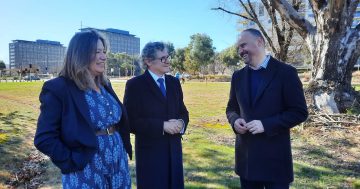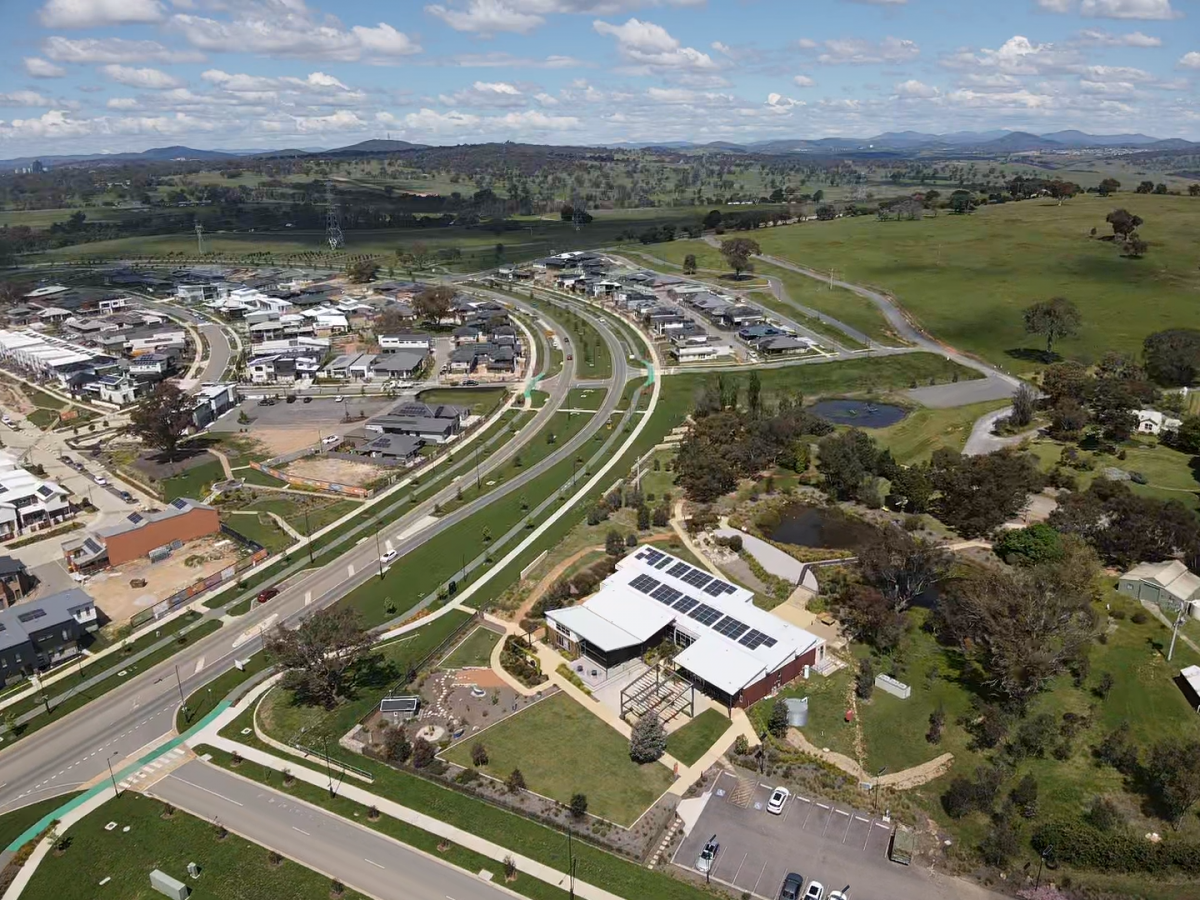
The Ginninderry joint venture: there will be 250 dwelling sites released in Macnamara in 2022-23. Photo: Ginninderry.
The ACT Government will boost its land release program as part of a package of measures in next week’s budget to increase the amount and range of housing in response to the highest population growth in the country, sky-high home prices, low vacancy rates and steepling rents.
The ACT’s population grew by 23 per cent in the decade to 2021 and is on track to hold 500,000 people by the end of this decade.
The government has faced increasing criticism from the opposition, the property industry and the community sector to act on what many call a housing crisis in the Territory.
Chief Minister Andrew Barr said the ACT’s nation-leading population growth had placed pressure on the housing market.
“In this Budget, the government is acting to further improve affordability and the supply of housing in the Territory. From targeted stamp duty cuts through to the construction of hundreds of new public housing dwellings – we are taking further steps to ensure Canberrans have access to safe and secure homes,” Mr Barr said.
He added that the ACT Government would work in partnership with the new Commonwealth Government to increase the supply of public, community, affordable and privately owned housing.
“The ACT Government has been building more affordable homes per capita than the national average,” Mr Barr said.
“We want to see more Build to Rent projects in the ACT, and the government will be pursuing private investment into these projects over the coming years.”
Along with plans to roll out more dwelling sites this financial year, the government will issue a prospectus for BTR projects pitched at both the private and community sectors.
It also plans to work closely with the Albanese Government on promised housing affordability measures that would deliver 600 properties, as well as continue talks on the redevelopment of the former CSIRO Ginninderra site and the renewal of the AIS precinct.
The budget will also include a further $30 million for the Growing and Renewing Public Housing program to add 140 more new dwellings to deliver 400 additional dwellings by 2025.
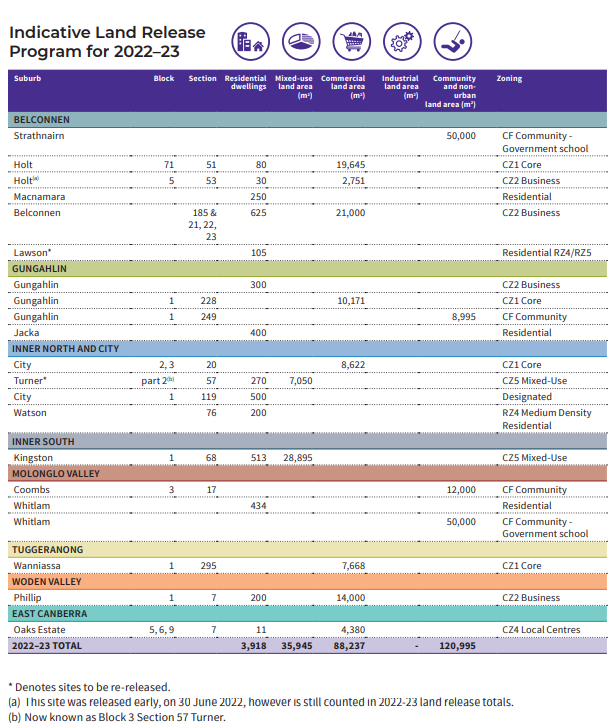
Indicative land Release Program for 2022-23. Image: ACT Government.
The government is planning for an increase of around 30,000 dwellings in the ACT over the next five years, which will increase the total housing supply in Canberra from around 180,000 dwellings to around 210,000.
The 2022 Indicative Land Release Program (ILRP) will account for a little more than half of these, with a record 16,417 dwelling sites to be released over the next five years.
The rest will come from private land release, BTR, Commonwealth social housing and land, and public housing.
This financial year, there will be 738 more sites released than indicated in last year’s land release program, including 513 new mixed-use releases in Kingston, 105 medium-density dwellings in Lawson and 80 in Holt.
There will also be high-density releases in the Gungahlin (300), Belconnen (625) and Woden (200) Town Centres.
But the planned release of 500 single residential blocks in the new Gungahlin suburb Kenny has been deferred to 2024-25, while 400 blocks will now be released in Jacka, with a further 280 planned for 2023-24, although the 200 listed for 2021-22 didn’t eventuate.
There are also top-ups to releases in Whitlam, where 434 blocks will be released, 134 more than scheduled, and 250 in Macnamara in the Ginninderry joint venture.
Further down the track, there are more releases in the new suburbs of Gungahlin, Belconnen and Molonglo but also 800 homes in North Weston, 400 in 2025-26 and 400 in 2026-27.
There are also 650 dwellings slated for East Lake in 2025-26 and 1200 for “urban intensification” in the unstated areas of North and South Canberra in 2026-27.
The program also includes Block 3 Section 57 in Turner (270 dwellings) in 2022-23 to pilot a Build to Rent project with an affordable rental component.
The government intends to release more sites for BTR and the prospectus says it will offer a range of incentives, including land tax concessions, deferred Lease Variation Charge payments or subsidies toward affordable rental components, but it has ruled out concessions on rates or the Foreign Ownership Land Tax Surcharge.
It will also offer a time-limited LVC discount to eligible BTR developments that include a minimum of 15 per cent of dwellings as affordable rentals, which must be managed by a registered Community Housing Provider for at least 15 years.
It will also entertain proposals from applicants that already have sites, with the first round opening in November.
The budget also includes $57.3 million for public housing repairs and maintenance, in addition to the $80 million allocated in the 2021-22 Budget.
A total of $1.4 million has been set aside to start insulation and electrification upgrades to public housing properties, to cut energy costs for tenants and support the government’s climate reduction targets.
The government says that since the Growth and Renewal Program was introduced in 2019-20, more than 219 new dwellings have been built, 93 dwellings acquired, 101 land sites purchased and 343 end-of-use public housing properties sold.
In 2022-23, it expects to have more than 700 dwellings under construction, including the delivery of 193 completed dwellings.
The budget will also have measures to help people buy a home, including more stamp duty cuts as part of the government’s tax reform program.
It will raise the lowest conveyance duty tax threshold for residential owner-occupiers from $200,000 to $260,000, reducing duty on homes between $260,000 and $1,455,000 by $1120, when combined with ongoing tax rate reductions.
The eligibility threshold for the Home Buyer Concession Scheme will be increased from $160,000 to $170,000, and will continue to rise by $3330 per child up to a maximum of five children.
The Deferred Duty and Disability Duty Concession Schemes’ price eligibility thresholds will rise from $750,000 to $1 million.
There is also funding to explore potential new policy directions to improve housing affordability for low-to-medium income Canberrans.
This includes an examination of the Affordable Home Purchase Scheme, BTR projects with affordable components, investigating a shared equity scheme, demonstration housing projects and relevant policy changes, ways to enhance community housing, and working with the Commonwealth on the National Rental Affordability Scheme.













